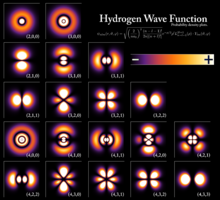Matter and energy
Some fields of science see nature as matter in motion, obeying certain laws of nature which science seeks to understand. For this reason the most fundamental science is generally understood to be "physics" – the name for which is still recognizable as meaning that it is the study of nature.
 Matter is commonly defined as the substance of which physical objects are composed. It constitutes the observable universe. The visible components of the universe are now believed to compose only 4.9 percent of the total mass. The remainder is believed to consist of 26.8 percent cold dark matter and 68.3 percent dark energy.[78] The exact arrangement of these components is still unknown and is under intensive investigation by physicists.
Matter is commonly defined as the substance of which physical objects are composed. It constitutes the observable universe. The visible components of the universe are now believed to compose only 4.9 percent of the total mass. The remainder is believed to consist of 26.8 percent cold dark matter and 68.3 percent dark energy.[78] The exact arrangement of these components is still unknown and is under intensive investigation by physicists.
The behavior of matter and energy throughout the observable universe appears to follow well-defined physical laws. These laws have been employed to produce cosmological models that successfully explain the structure and the evolution of the universe we can observe. The mathematical expressions of the laws of physics employ a set of twenty physical constants[79] that appear to be static across the observable universe.[80] The values of these constants have been carefully measured, but the reason for their specific values remains a mystery